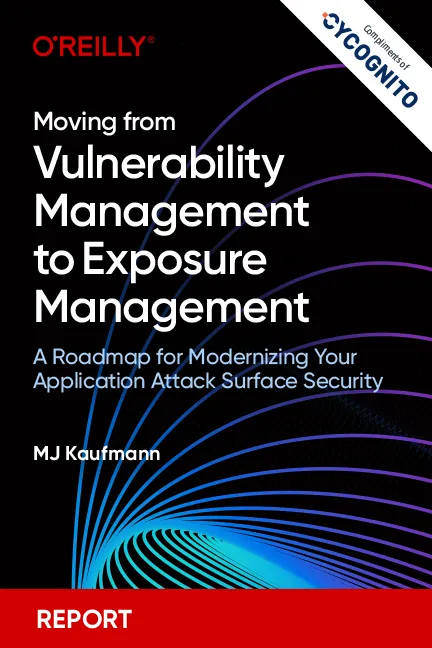The Vulnerability Scanning Process
The process of scanning for vulnerabilities typically involves the following steps:
Creating an Asset Inventory
The first step in the vulnerability scanning process involves creating an asset inventory. This includes a comprehensive list of all the hardware, software, and network resources within your organization. Each of these assets can potentially pose a threat, and therefore, must be carefully monitored and managed.
Creating an asset inventory is a meticulous process that requires a thorough understanding of your organization's IT infrastructure. It involves identifying and documenting all the devices, systems, and software in use. This includes everything from servers, workstations, and network devices to applications, data, and users.
Once you have a comprehensive inventory, it becomes easier to track any changes in the system and identify any unusual activity. This is an essential step in maintaining the security of your organization's network.
Scanning the Attack Surface
The next step in the vulnerability scanning process is scanning the attack surface. This involves examining all the potential points of entry that an attacker could use to gain access to your system. It's crucial to understand that any component of the system that interacts with the outside world is a potential entry point.
Scanning the attack surface involves assessing each of these entry points for weaknesses. This could include open ports, unpatched software, insecure configurations, and more. The goal is to identify potential vulnerabilities before they can be exploited by an attacker.
This process involves the use of automated tools that can quickly and accurately identify potential vulnerabilities. Once these vulnerabilities are identified, they can be prioritized and addressed accordingly.
Comparing with Vulnerability Databases
After scanning the attack surface, the next step in the vulnerability scanning process is comparing the findings with vulnerability databases. These databases contain a catalog of known vulnerabilities that could potentially affect a system.
Comparing findings with these databases makes it possible to identify known vulnerabilities. These vulnerabilities are often assigned a severity rating based on their potential impact and the likelihood of them being exploited.
Detecting and Classifying
Detecting and classifying vulnerabilities involves examining the nature of the vulnerability, its potential impact, and the likelihood of it being exploited. This information is then used to classify the vulnerability based on its severity or other criteria.
This stage of the process is critical as it determines how the vulnerability will be addressed. Depending on the severity and nature of the vulnerability, different remediation strategies may be required.
Prioritization
After detecting and classifying vulnerabilities, the next step is prioritization. This involves evaluating each identified vulnerability based on its severity, potential impact on the organization, and the likelihood of exploitation.
Prioritization is vital because it helps security teams focus their efforts on the most critical vulnerabilities that pose the greatest risk to the organization. Prioritization criteria often include the criticality of the affected system, the complexity of the exploitation, and the sensitivity of the data at risk.
Reporting
After the vulnerabilities have been detected and classified, the next step in the vulnerability scanning process is reporting. This involves documenting the findings and presenting them in a format that can be easily understood and acted upon.
The report should provide a comprehensive overview of the vulnerabilities identified, their potential impact, and the recommended remediation strategies. It should also include a prioritized list of vulnerabilities, with the most severe vulnerabilities listed first.
Remediation
The final step in the vulnerability scanning process is acting to remediate. This involves implementing the necessary measures to address the identified vulnerabilities. Depending on the nature and severity of the vulnerability, this could involve patching software, updating configurations, or even replacing hardware.
Remediation is perhaps the most critical part of the vulnerability scanning process. After all, identifying vulnerabilities is only half the battle—the real challenge lies in addressing them effectively.
Which Vulnerabilities Can Be Detected by Scanning?
Here are a few common examples of vulnerabilities that can be detected by automated scanning.
Security Misconfigurations
Security configurations are a common problem and can become a significant security risk. Misconfigurations may be as simple as a shared folder that's inadvertently left open for everyone to access, or as complex as a poorly configured firewall that allows unauthorized access to sensitive data.
Insecure configurations can also involve default settings that have not been changed after installation. For instance, a database server might be configured to allow connections from any IP address, or a web server might be set up to display detailed error messages that could reveal sensitive information.
Vulnerability scanning helps in identifying these misconfigurations and insecure settings, so they can be corrected promptly. It's an essential tool for enforcing secure configurations across all systems in a network.
Outdated Software with Known Vulnerabilities
Another common vulnerability that scanning often identifies is the use of outdated software with known vulnerabilities. Software companies routinely release updates and patches to fix security flaws in their products. However, if these updates are not installed promptly, the system remains vulnerable to attacks that exploit these known vulnerabilities.
Outdated software can include anything from operating systems and database servers to web browsers and plugins. Even the most seemingly innocuous software can have vulnerabilities that can be exploited by malicious actors.
Vulnerability scanning plays a crucial role in identifying outdated software and ensuring timely updates. Regular scanning can help keep software up to date, reducing the risk of attacks and enhancing overall security.
Weak Passwords and Default Credentials
Weak passwords are another common vulnerability that can be detected by scanning. Passwords are often the first line of defense in protecting sensitive data. However, many users still use overly simple passwords, or worse, use the same password across multiple systems. It is also common for organizations to deploy systems or equipment and keep the default admin password.
Weak passwords can be easily cracked by brute-force attacks or guessed by attackers using common password lists. Once an attacker gains access to one system, they can often access other systems if the same password is used across multiple accounts.
Vulnerability scanning can help identify weak passwords, promoting the use of strong, unique passwords across all systems. Regular scanning can also help enforce password policies, further strengthening this crucial line of defense.
Unnecessary Open Ports and Services
Unnecessary open ports and services represent another common vulnerability that can be identified through scanning. Ports are the entry points into a system, and each open port represents a potential avenue for attack. Likewise, every service running on a system could potentially be exploited if it has vulnerabilities.
While some ports must be open for systems to communicate, unnecessary open ports can allow attackers to gain unauthorized access to systems and data. Likewise, vulnerable services can be exploited to gain control over a system or to disrupt its operation.
Vulnerability scanning can help identify open ports and services, allowing for them to be closed or protected as necessary. It's an essential tool for securing systems and protecting against unauthorized access.
4 Best Practices for Effective Vulnerability Scanning
1. Schedule Regular Scans
How often should you scan? That depends on several factors, including your industry, the sensitivity of your data, and your risk tolerance. However, given the dynamism of the threat landscape, many organizations conduct monthly or even weekly vulnerability scans. For more sensitive environments, there may be a need for even more frequent scans.
Remember, the goal is to identify and address vulnerabilities before they can be exploited. New vulnerabilities emerge all the time, and even devices that are currently safe can suddenly become vulnerable due to changes to software or configuration.
2. Risk-Based Prioritization
Not all vulnerabilities are created equal. Some pose a greater risk to your organization than others. That's why it's important to prioritize your vulnerability remediation efforts based on risk.
Risk-based prioritization involves assessing the potential impact of each vulnerability and the likelihood of it being exploited. Vulnerabilities that could cause significant damage and are likely to be exploited should be prioritized for remediation.
This approach ensures that you're focusing your resources where they're most needed, thereby maximizing the effectiveness of your vulnerability management efforts.
3. Integrating with Incident Response and Risk Management
Vulnerability scanning shouldn't operate in a silo. It should be integrated with your incident response and risk management processes to provide a comprehensive approach to cybersecurity.
When a vulnerability is identified, it should trigger your incident response process. This includes investigating the vulnerability, determining its potential impact, and implementing a remediation plan.
At the same time, the data from your vulnerability scans should feed into your corporate risk management process. This can help you assess your overall risk profile and make informed decisions about resource allocation and risk mitigation strategies.
4. Staff Training and Stakeholder Communication
Effective vulnerability scanning requires staff training and stakeholder communication. Your staff needs to understand the importance of vulnerability scanning and how to conduct scans properly. Regular training can help ensure they stay up-to-date with the latest threats and scanning techniques.
Moreover, it's important to communicate the results of your vulnerability scans to relevant stakeholders. This may include senior management, IT teams, and even board members. Transparent communication can help build support for your vulnerability scanning efforts and ensure everyone understands the role they play in maintaining cybersecurity.
Vulnerability Management with CyCognito Attack Surface Management Platform
The CyCognito platform addresses today’s vulnerability management requirements by taking an automated multi-faceted approach to identifying and remediating critical issues based on their business impact rather than focusing on the generic severity of the threat alone. To do this you need a platform that is continuously monitoring the attack surface for changes and provides intelligent prioritization that incorporates organization’s context.
The CyCognito platform addresses today’s vulnerability management requirements by:
- Discovery: Maintaining a dynamic asset inventory with classification of the entire external attack surface, including exposed on-premise and cloud-hosted assets like web applications, IP addresses, domains and certificates, eliminating the need to rely on outdated or incomplete information from collaboration tools, spreadsheets, or emails. This approach significantly reduces the burden of tedious, error-prone and costly processes.
- Active Security Testing: Actively testing all discovered assets to identify risk. Active testing, including dynamic application security testing, or DAST, uncovers complex issues and validates known issues, with low false positives. Each exploited asset is assigned a security grade based on its criticality to the business.
- Prioritization: Prioritizing critical issues, guiding security teams to focus on the most urgent threats. Our unique risk-based prioritization analysis goes beyond the common vulnerability scoring system (CVSS), and incorporates factors like asset discoverability, asset attractiveness, exploitability, business impact and remediation complexity. Integrated tactical threat intelligence identifies the handful of attack vectors that pose the greatest risk.
- Remediation: Streamlining communications between remediation teams by providing comprehensive, verifiable evidence for each exploited asset. This evidence includes detailed risk assessments, asset ownership information, and actionable remediation guidance. The platform seamlessly integrates with SIEM, SOAR and ticketing system tools like Jira, ServiceNow and Splunk to facilitate information sharing and collaboration.
Learn more about the CyCognito platform.






 Complimentary Report
Complimentary Report